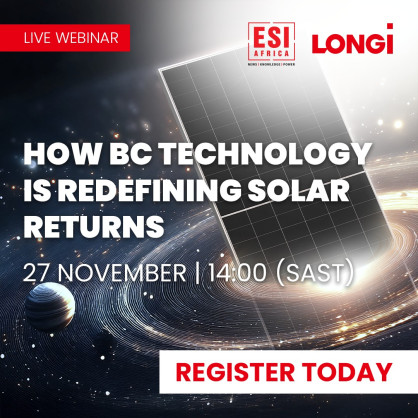
Back Contact (BC) solar technology is emerging as the cornerstone of the next industrial phase for solar photovoltaic (PV) projects by combining record-setting efficiency with lower production costs.
By 2030, PV is expected to account for more than 70% of new renewable energy capacity, making it the single largest renewable power source worldwide. By 2050, cumulative installations could reach 18,200GW, meeting nearly half of global electricity demand.
However, the industry continues to face challenges including overcapacity, falling prices, and growing pressure to innovate for higher yields and reduced carbon footprints.
BC Technology: From Laboratory Concept to Industrial Mainstream
BC solar cells position all electrical contacts on the rear surface of the cell, eliminating front-side metal shading and significantly boosting light absorption.
This design enables mass-production efficiencies above 27%, outperforming conventional tunnel oxide passivated contact (TOPCon) cells by approximately 1.6 percentage points — a gain that has historically marked major market-wide technology transitions.
Through sustained research and process innovation, BC technology has evolved from a high-cost, niche solution to a scalable, industrial mainstream option.
Three Breakthroughs Driving Industrialization
- Laser Patterning replacing photolithography, reducing manufacturing costs by over 60% and increasing throughput fortyfold.
- Wet-process Simplification, cutting chemical steps from ten to three and halving processing time.
- Zero-busbar and Parallel Soldering, reducing silver usage by 30% and improving both module reliability and efficiency.
Record Efficiency and Verified Reliability
In March 2025, BC cells achieved a world-record efficiency of 27.81%, only 1.3% below the theoretical silicon limit. Field data from more than 30 demonstration projects across Asia and Europe confirm that BC modules deliver 1.2% to 3.2% higher power generation than TOPCon under clear conditions, and up to 33% higher output under partial shading.
This performance advantage, combined with lower material intensity, positions BC modules as a sustainable and cost-efficient solution for investors and developers operating under tightening carbon-footprint regulations.
The BC Decade: 2025–2035
Industry analysts forecast that BC modules will capture more than 60% of global PV market share by 2030. The technology’s superior efficiency and shading tolerance make it particularly suited for urban rooftops, floating solar installations, desert-based systems, and other high-value commercial applications.
As global energy transitions accelerate, BC solar technology is set to lead the PV sector from price-based to value-based competition — where energy yield, reliability, and lifecycle sustainability define success.
Webinar Invitation
Industry professionals, project developers, financiers, and renewable energy policymakers are invited to join a technical webinar hosted by solar technology experts.
Date: Thursday, 27 November 2025
Time: 2:00–3:00 PM SAST
Topic: Back Contact (BC) Solar Technology — Fundamentals and Practical Advantages
Register here: https://apo-opa.co/4ntstvR
Distributed by APO Group on behalf of VUKA Group.


